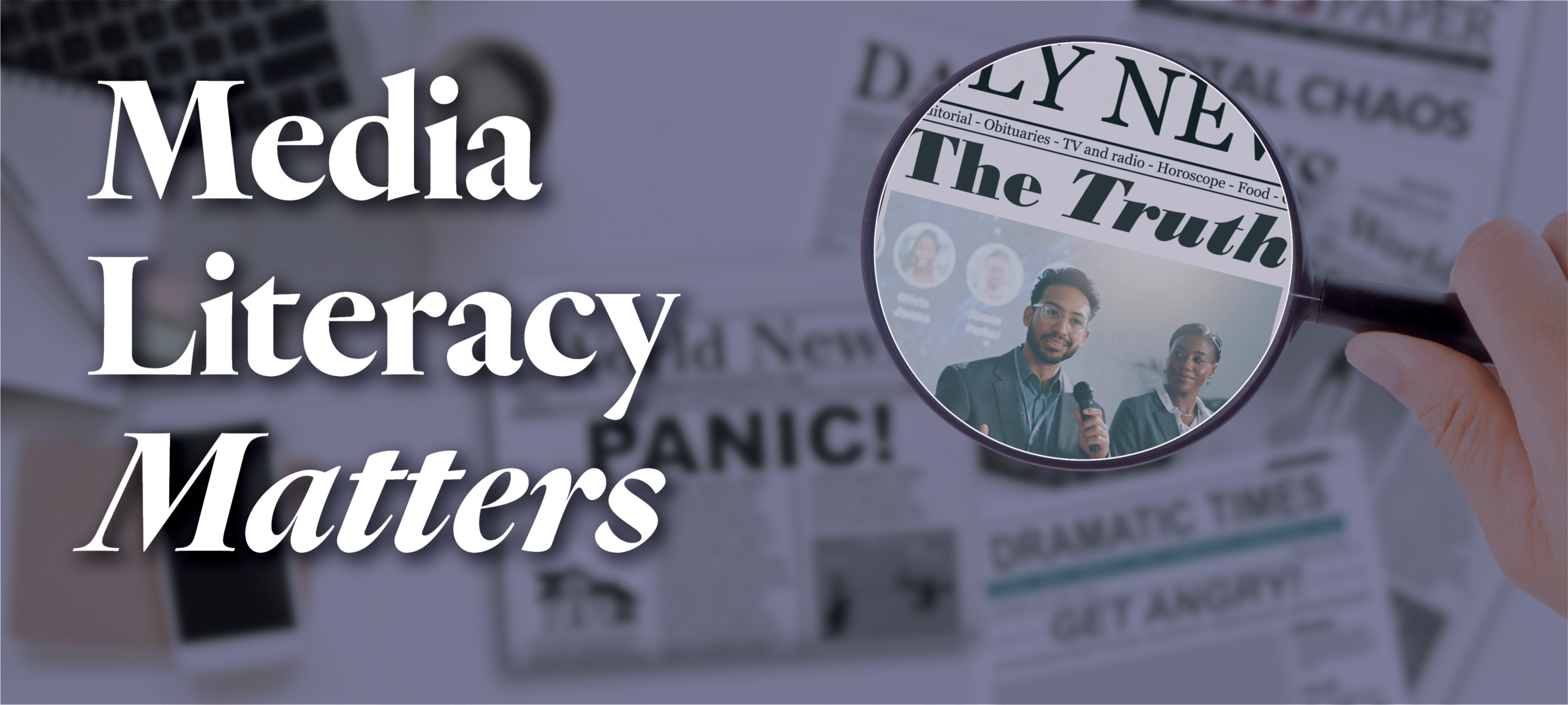
We’ve all seen it happen, or maybe we’ve done it ourselves — a friend shares a shocking headline and before you know it, half of your group chat is convinced a celebrity said something outrageous, a new law has passed, or a photo “absolutely proves” something that never happened. After a few minutes of Google searching later, everyone realizes it isn’t true. In my nearly 5 years as a fact-checker I’ve seen firsthand just how fast misinformation can spread, and how easily even smart, well-meaning people can get swept up in it.
Embarrassing? Maybe. Harmless? Not always.
Between a constant stream of brain-rot social media posts, 24-hour news cycles, and the rapid advancement of AI-generated slop, media literacy skills are becoming increasingly rare.
Now more than ever media literacy is an essential skill.
Why Media Literacy Matters
This isn’t just about spotting fake news — it’s about thinking critically about all of the information we consume — who’s sharing it, why, and how it might shape our perspectives.
In the workplace, a misunderstood headline can influence how a company reacts to current events, handles internal communications, or advises clients. In our personal lives, being a trustworthy source in our own circles and making sense of the communities we live in helps ensure we don’t accidentally pass along harmful misinformation. Whether you’re sending a news article in a Teams chat or sharing a post in a family group chat, credibility counts.
How To Think Like a Fact Checker
So how do you make sure you’re not falling for false info? The key is to start simple, be thorough, and soon you’ll be able to quickly check for the right information in practically no time at all.
- Always double-check your sources! If something or someone sounds sensational, surprising, or too good to be true, always check where that information is coming from. Have you heard of the source before? Is it trustworthy? Are other sources reporting on this piece of news?
- Cross-reference multiple outlets. Try to verify your news with at least two different sources, though comparing three different sources is ideal. This is an easy way to spot discrepancies between what’s being reported, and it helps you gain an understanding of the subject from multiple perspectives and biases. Checking out multiple sources can help answer questions like: “Why is Reporter A saying this is good news when Reporter B says it’s bad?”.
- Diversify your feed. Try not to get stuck in a media bubble. Our news and social media algorithms have become well trained to feed us only what we want to see, which can leave us blind to other opinions and perspectives —especially when we might not want to agree with them. How can anyone respond to different ideas and opinions without looking at them? Read from different outlets, formats, and from people with all kinds of viewpoints and biases. A varied news feed always makes for a more balanced perspective and a well-informed response.
- Check where your source got its information from: Even the most reputable outlets sometimes rely on secondhand reports or misinterpret data. If you’re skeptical about a fact, trace it back to the original source to find out who said it.
- Verify AI-generated content. Remember that while artificial intelligence can be a helpful tool, it’s just a starting point.
A Little Skepticism Goes a Long Way
Trying to be media literate doesn’t have to mean you have to be consumed with paranoia and distrust of everything and everyone — it simply means verifying before believing. Think of it like proofreading an email before sending it or editing a Word document before submitting it to your boss. A few extra minutes of checking your sources can prevent a lot of confusion (and potential embarrassment). At the end of the day, the best way to stay informed is to stay curious. Don’t be afraid to ask questions. Cross-check what you read. Follow journalists, not just influencers, and do your own research whenever possible.
Consuming information responsibly is as much of a professional skill as it is a personal one. Because in a world where everyone’s a publisher, the most reliable person is the one who thinks about where information comes from before they click send.





